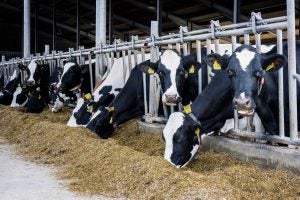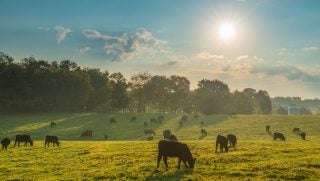On Monday, the U.S. government announced the collection of ground beef samples for testing from retail stores in states hit by bird flu outbreaks in dairy cows, though it maintains confidence in meat safety.
Federal officials aim to ensure milk and meat safety following H5N1 virus confirmations in 34 dairy cattle herds across nine states since late March, along with one case in a person from Texas.
While the Centers for Disease Control and Prevention and the World Health Organization note a low overall public health risk, caution is advised for those exposed to infected animals.
Scientists suspect that cow outbreaks are more widespread than officially reported, citing the discovery of H5N1 particles in approximately 20 percent of milk samples. However, the U.S. Food and Drug Administration reassured on Friday that pasteurization effectively eliminates the bird flu virus in milk.
The U.S. Department of Agriculture will use PCR tests to examine retail ground beef samples for viral particles. This move is crucial as some dairy cows are processed into ground beef upon aging.

Starting Monday, lactating dairy cows must test negative for bird flu before interstate movement to contain the virus, except for those shipped directly to slaughter facilities, which only require veterinarian inspection documentation.
USDA ensures inspection of each animal pre-slaughter, with all cattle carcasses passing inspection before entering the human food supply. Additionally, beef muscle samples from condemned dairy cattle at slaughter facilities will be tested for viral presence.
Colombia has restricted beef imports from U.S. states with avian influenza in dairy cows since April 15, despite no reported bird flu cases in beef cattle.
Since the initial incidents in Texas and Kansas, USDA has confirmed other HPAI infections in dairy cattle in Michigan, New Mexico, Idaho, Ohio, North Carolina, South Dakota, and Colorado. The lone human case in the outbreak occurred in a Texas farm worker who developed conjunctivitis after exposure to dairy cows.
Wild birds — and especially waterfowl — which are natural carriers of HPAI, are believed to be the original source of infections in cattle, according to USDA. However, the latest information indicates that the virus spreads from cow to cow.

“How the virus is spreading is not yet well understood, but there’s clear evidence of cow-to-cow transfer,” said Haley Springer, who associate clinical professor at Penn State’s Department of Veterinary and Biomedical Sciences. “I don’t think we can rule out bird introductions, but I think that’s going to be less likely, at least in Pennsylvania, than cow-to-cow transmission.”
This point was confirmed by the FDA, which announced that, although HPAI virus fragments have been found in pasteurized milk, these findings “do not represent actual virus that may be a risk to consumers.” The agency added that “to date, we have seen nothing that would change our assessment that the commercial milk supply is safe.”
Following are some recommendations from Penn State experts for protecting cattle from HPAI:
- Avoid bringing new animals onto the farm, especially lactating animals.
- Limit visitors to those essential to the farm, and exclude visitors from animal areas when possible. Provide visitors with boot covers or access to farm-dedicated boots.
- Do not share equipment that will enter animal housing areas between farms. Thoroughly clean and disinfect equipment if moved between premises.
- Work with your herd veterinarian to develop a biosecurity plan, including premovement testing for any animals that must be brought onto the farm.
- Restrict farm vehicle access to areas contaminated with waterfowl feces.
- Identify areas where birds congregate in buildings and install barriers or deterrents to limit access to these areas.
- Fence cattle away from ponds or other areas where waterfowl frequent.
- Avoid using untreated surface water for cattle drinking water.
- Fully empty and disinfect water troughs frequented by birds.


